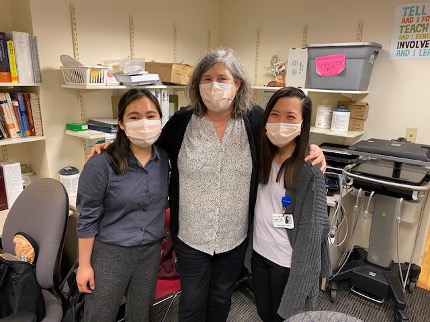Site Spotlight: Q&A with Susan Rowe
MultiCare Tacoma Family Medicine

How do you or others on the team create a welcoming learning environment for students?
One of my first questions to each student is about their long-term goals, if determined, and their baseline experience. I give the students a tour of the clinic. I make sure that I introduce our student to everyone that comes into the room. I also post their first name on the white board when I list the names of the attending preceptors for the day.
We know that you work with WIP students, APPE students, in addition to both medical and pharmacy residents. How do you work with the different levels of learners at your site?
In working with any level of learner, I don’t make assumptions about ability or skill. I let every student try every question, ask the clarifying questions they need to ask, and then edit with them for their final product. If an answer or recommendation is needed more quickly, I can provide a response, and then we can review. I always appreciate when students ask additional questions, such as where look for information or what factors I use to strictly utilize versus deviate from a guideline, as this helps me to know more about where they need additional guidance.
How do you incorporate students into the workflow and day-to-day operations?
There is quite a bit of variability from day to day. I have the expectation that they will check the schedule and preview the patients we will be seeing. The student writes patient care documentation. For phone management, the student can review messages, check their response with me, then call the patient back. The student can then select a topic for our weekly topic discussion based on the questions they are hearing or getting asked. I engage students in a few administrative activities, such as checking and recording room temperature for testing supplies each day.
What are ways that you engage students in inter-professional interactions?
I will occasionally ask colleagues if a student or pharmacy resident can shadow them for half a day, depending on interest. Examples of this were pairing the WIP students with the LPN while she was rooming patients, taking vital signs, and giving vaccinations, or pairing a student or resident with a provider while they saw patients.
Additionally, the physician staff and residents have had great interactions with previous residents and students and are comfortable asking questions. There is an expectation that our students can find an answer to questions asked, which helps to increase their accountability to the team.
How do you foster a culture of learning across the Tacoma Family Medicine team that allows students to be trusted and integrated with the team?
I am not sure I can take credit for this. I have been so privileged to work everyday surrounded by learners, even the faculty physicians consult with each other, and me. It is a curiosity culture. Our pharmacy students join the other learners, pharmacy and medical residents, medical students, new nursing hires, and ARNP students. I think the trust and integration is facilitated by the safety net we provide.
How do you engage students in unique projects or pharmacy transformation?
I would like to say I always have a student project, but truthfully, I don’t always have one. I tend to keep track of ongoing needs and then incorporate the student. This way, they are involved in a project that gets put to work within the practice. Examples have been researching updates in practice and references for my CDTAs, an annotated bibliography for alternative methods for calculating creatinine clearance for a Black Lives Matter initiative, and reviewing hypertension treatment data to determine if we had issues with disparities in care. The last listed was actually a large project, so I had both WIP students work on it together during their final week with the clinic. They were stellar, and provided good data with recommendations.
I hope students will see how a pharmacist can uniquely contribute to health care, both through professional knowledge and being a good human. I hope students can focus their participation on new innovations as the best use of their time.
This interview has been edited and condensed for clarity.